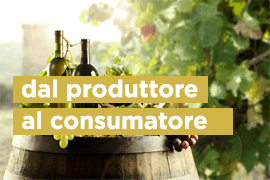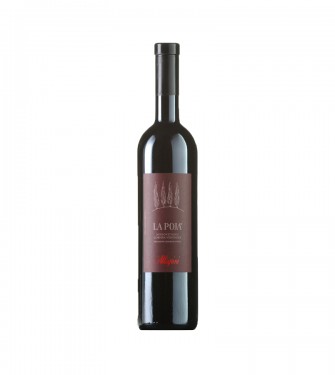Corvina WINES
Corvina is an Italian red wine grape, and it’s most famous as an essential ingredient along with Rondinella in the brewing of Valpolicella wines. Corvina wine is characterized by its lack of tannin and color as well as its sour cherry flavor. (continue)
-
La Poja IGT - Allegrini
Allegrini
Sold by Winezon On the top of the hill called La Grola lies a plateau of less than 3 hectares dazzling white in colour, due to its calcareous top soil, and planted exclusively with Corvina since the late 1970s. The premium quality viticultural techniques yield grapes with great personality and maturity. After over 4 years of ageing, the wine is still extraordinarily fresh and crisp with a full spectrum of aromas ranging from fruit to spices and officinal herbs. Full bodied and luscious, with a long, lingering finish. The inspiration behind this monovarietal lies with Giovanni Allegrini and stemmed from his passionate belief in the land on which he lived. It has the potential to age for 18 years Learn More€ 108,24€ 84,79 -22%
Corvina WINE
Corvina is an Italian red wine grape, and it’s most famous as an essential ingredient along with Rondinella in the brewing of Valpolicella wines. Corvina wine is characterized by its lack of tannin and color as well as its sour cherry flavor. Corvina wines are light in structure and bright red. The high acidity content of Corvina is of essential to the character of the wine. The small berries of Corvina have a low content of tannin and color extracts. Other countries such as Argentina and Australia have made a significance progress in manufacturing of Corvina based wines.
The Corvina and wine making
In northeastern parts of Italy, Corvina is widely planted and makes up the DOC, IGT and DOCG wines. Corvina makes up the majority but not the whole in Amarone, Valpolicella and Bardolino wines. A challenge is that the variety ripens very late which tends to be an issue to the farmers, but the thick skin of the grape protects it from rots which can affect wine quality. After picking the grapes from the farm, they are then spread on straw mats to concentrate flavors. Corvina wine is made by extracting the grape juice. The grape juice is then left to ferment for approximately 2-weeks at temperatures between 26-28 degrees. In order to develop quality, it's stored in barrels.
Organoleptic properties of corvina wine.
Corvina is has a perfume of plums, wild cherries and strawberry and is light ruby in color. Corvina is most often confused with Corvinone a red grape that is commonly used in production of straw wines. Corvina is has a perfume of plums, wild cherries and strawberry and is light ruby in color. Corvina is most often confused with Corvinone a red grape that is commonly used in production of straw wines
The serving suggestions for Corvina Wine has
The best suitable food matches for Corvina include; Fried Chicken Livers, Porcini mushroom soup and Char Siu (Chinese BBQ Pork)










